列日居尔曼高铁火车站,列日,比利时
建筑设计: 圣地亚哥·卡拉特拉瓦
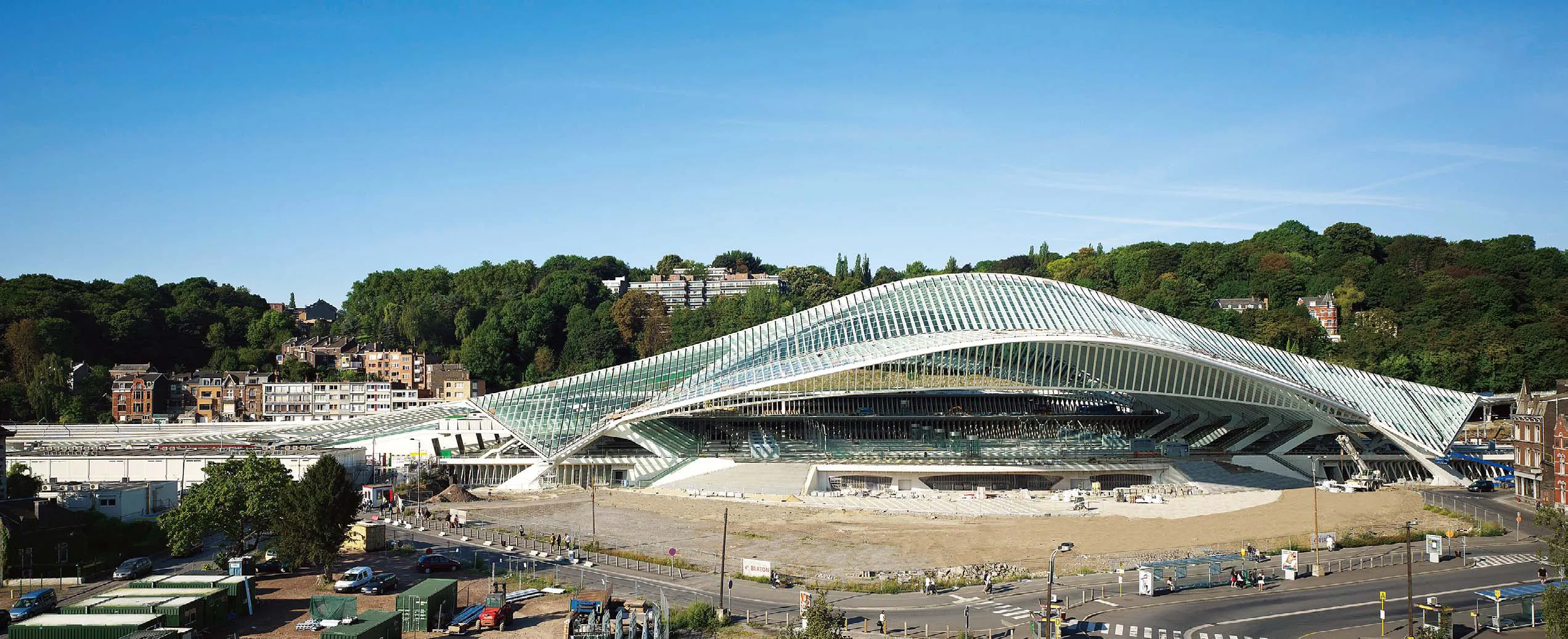
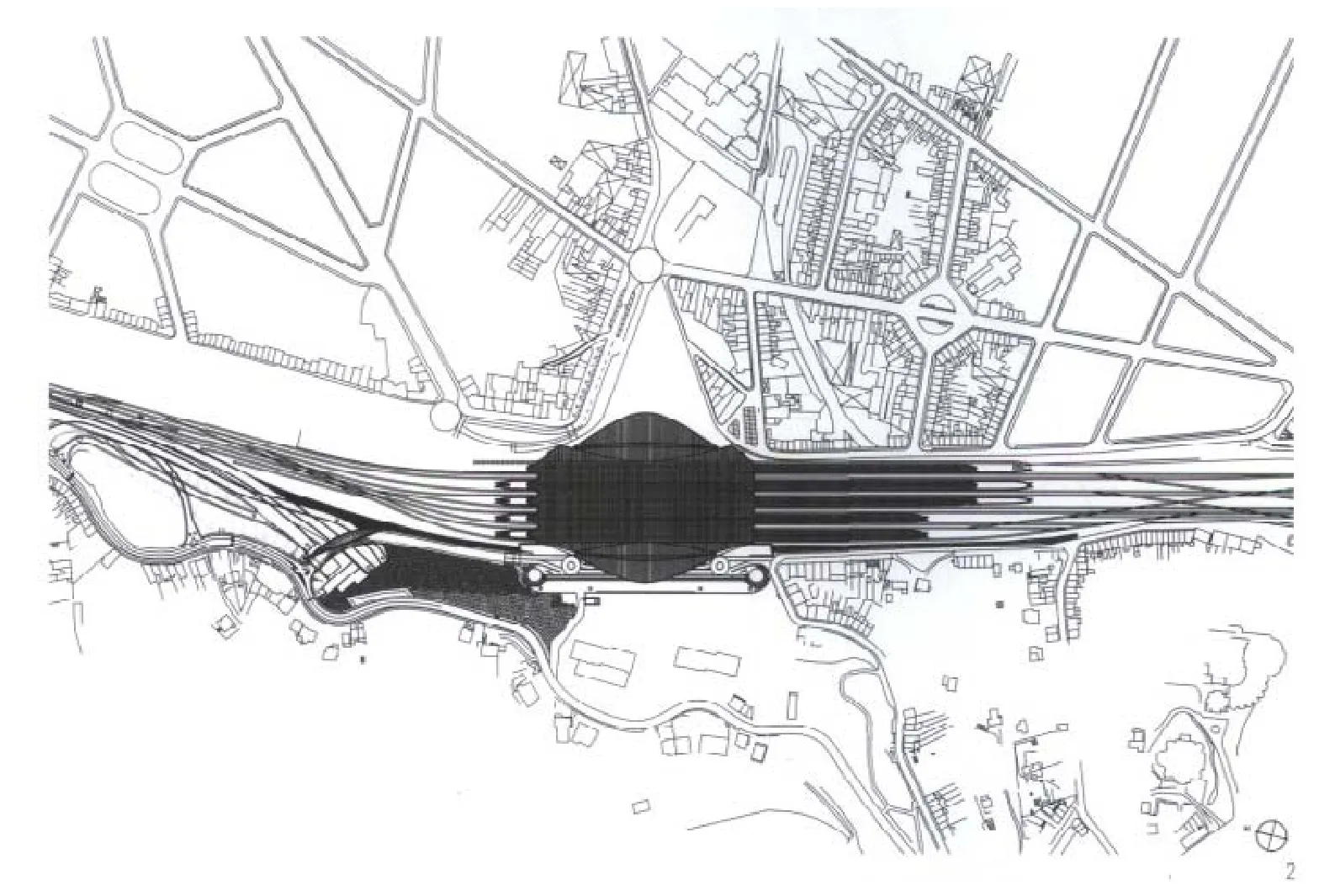
1 外景/Exterior view
2 总平面/Site plan
列日是目前欧洲高速铁路网络中连接英国、法国、比利时和德国的一个主要节点。当列日市为了适应高速铁路交通的需要而重建现有火车站的时候,列日欧洲高铁公司面向全欧洲建筑师征集了设计方案。圣地亚哥·卡拉特拉瓦获得了新列日市居尔曼火车站的设计任务,这在很大程度上归功于他在该领域的丰富经验,如里昂的沙特拉斯空地转接机场和里斯本的东方火车站的设计。
卡拉特拉瓦认为,这座车站应该成为列日市南北两片不同城市区域之间的联结点,它们在此之前一直为火车轨道所分隔。项目地段的北侧是萧条的市区,其布局建立在典型的19世纪城市规划方案的基础上。地段南侧则是克万特山绵延倾斜的山坡,作为住宅区密度较低,景色优美。卡拉特拉瓦设计了一座200m长的客运站来桥接这两片区域,由此形成了一条近于西北-东南方向的轴线。车站的拱形屋顶宽145m,伸展覆盖了5座站台。车站在市区的一侧(北侧)高3层楼,内部包含一处通往车站的人行天桥和火车站台层。(位于站台下方的)车站广场层有一整排商业设施,它们强化了空间的街道感。在这些商业设施中,包括一座位于建筑主轴线上的乘客大厅,其左侧为售票区域,右侧则是酒吧兼餐厅。车站靠近山坡的一侧(南侧)有5层楼:包括3层停车区域,一处能与人行天桥相通的车辆出入平台,以及升起的人行通道。
气势恢弘的拱顶由钢和玻璃建成,充分表现出建筑的轻盈通透,由此形成了车站与城市之间相互渗透之感。位于铁轨下方的若干人行天桥与一处人行通道使车站两侧的大量人流能够通行无阻。这些过渡空间的建筑细节设计也受到了特别关注。
由于室内外的交流互动顺畅无阻,整座建筑不存在传统意义上的建筑立面。庄严宏伟的屋顶实际上成为了建筑的立面。从山顶望去,透过屋顶能够看到车站内部的一些空间组织。在车站内部,屋顶的拱形结构又是欣赏室外风光的取景框。无论站在哪个有利于观察的位置,建筑的通透感都是最鲜明的特点。
因为车站金属结构的安装必须不妨碍列车运营,所以,建设施工采用了一种在桥梁建设中广泛应用的技术。各基本框架都先在方案中设计为在车站广场的区域进行组装,那里距离列车较远。夜间,再将这些框架以6个为一组安装至主支撑结构。一旦所有的基本屋顶框架都安装完毕,两座屋顶的顶篷便可组装到位,再以玻璃覆盖表面。□(徐知兰 译)
建筑面积/Area of Construction: 49 000m2(包括铁轨占地面积/incl. tracks)
项目总成本/Total Cost of Project: 3.6亿美元/360 Million USD
业主/Client: 比利时国家铁路控股公司、Infrabel铁路基建公司、列日欧洲高铁公司/SNCB Holding, Infrabel and Euro Liège TGV
建筑尺度/Dimensions:
总长度/Total Length: 488m
钢结构总长度/Total Length of Work in Steel: 410m钢结构总宽度/Total Width of Work in Steel: 160m
最大跨度/Max. Span Between Supports: 158m
总玻璃屋面表面积/Total Surface Glazed Roof: 33 000m2摄影/Photo: Barbara Burg + Oliver Schuh
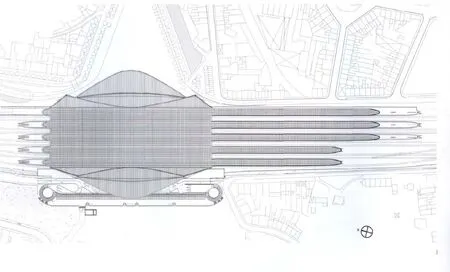
3 平面图/Plan
The city of Liège is now a major node in the European high-speed rail network, which links England, France, Belgium, and Germany. When the city’s existing station had to be replaced, as unsuitable for the demands of high-speed rail travel,Euro Liège TGV issued a request for proposals from European architects. Santiago Calatrava received the commission to design the new Liège-Guillemins station, largely because of his vast experience in the field, in projects such as the Lyon-Satolas airrail link and the Oriente station in Lisbon.
Calatrava conceived the station as a link between two distinct areas of the city of Liège,which previously had been separated by the railroad tracks. On the north side of the site is a rundown urban area, laid out in a typical 19th century scheme. On the south side, on the slopes of the Cointe Hill, is a less dense, landscaped residential area. Calatrava’s design bridges these two areas with a 200 m (656 ft) passenger terminal, built symmetrically about a northwest-southeast axis. The arched roof of the terminal building extends over the five platforms for another 145 m (476 ft). The station is three levels high on the urban (north) side,stacking an access footbridge and a level of rail platforms. At the level of the Place de la Gare (under the platform), a strip of commercial units helps to reinforce the streetscape. These units include the Passenger Hall on the main axis, with the ticketing area on the left and a bar-restaurant on the right.On the hill (south) side are five levels: three levels of parking, a vehicular access deck linked with the access footbridge, and a raised pedestrian walkway.
Transparency is achieved by means of the monumental vault, constructed of glass and steel,which allows for a sense of interpenetration between the station and the city. The pedestrian bridges and a walkway under the tracks allow for fluid communication between the two sides of the station. Particular attention is paid to the architectural detailing of these transitional spaces.
The project has no facade in the traditional sense, since the interaction between interior and exterior is seamless. The monumental roof becomes,in effect, the project’s facade. To an observer on the hill, the roof reveals something of the inner organization of the station. To an observer within the station, the structural arches of the roof frame the views to the outside. From any vantage point,the sensation of transparency prevails.
Because the metal frame of the station needed to be put in place without disrupting train service, a technique normally employed in bridge construction was used. The principal frames were assembled in an area away from the trains, located at the proposed Place de la Gare. At night, the frames were pushed in groups of six onto the principal supports. Once the principal roofs were in place,the two canopies were assembled in position and glazed.□
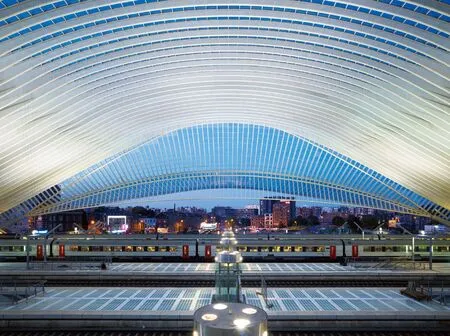

4 站台/Platform view
5 横剖面/Transverse section
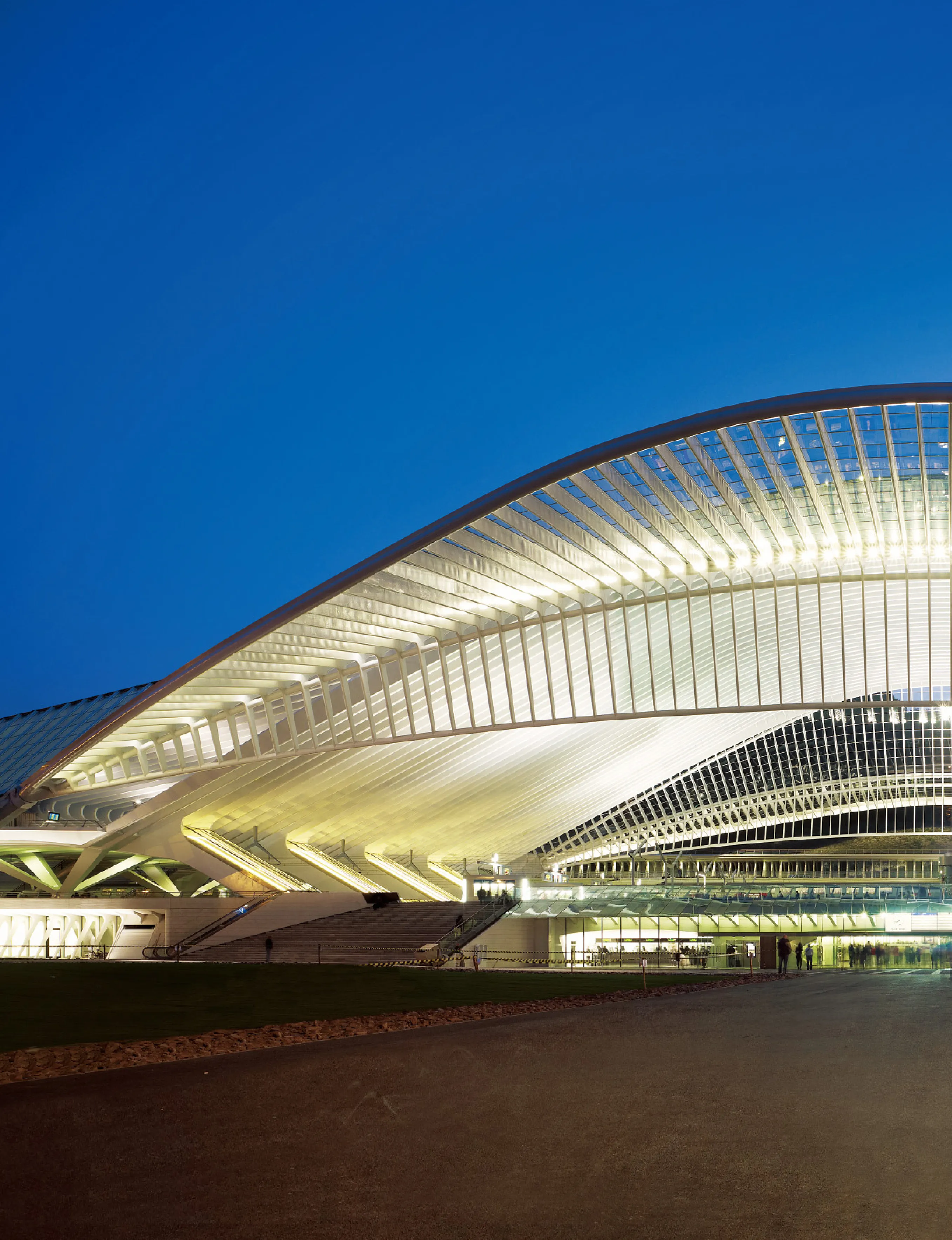
6 夜景/Night view

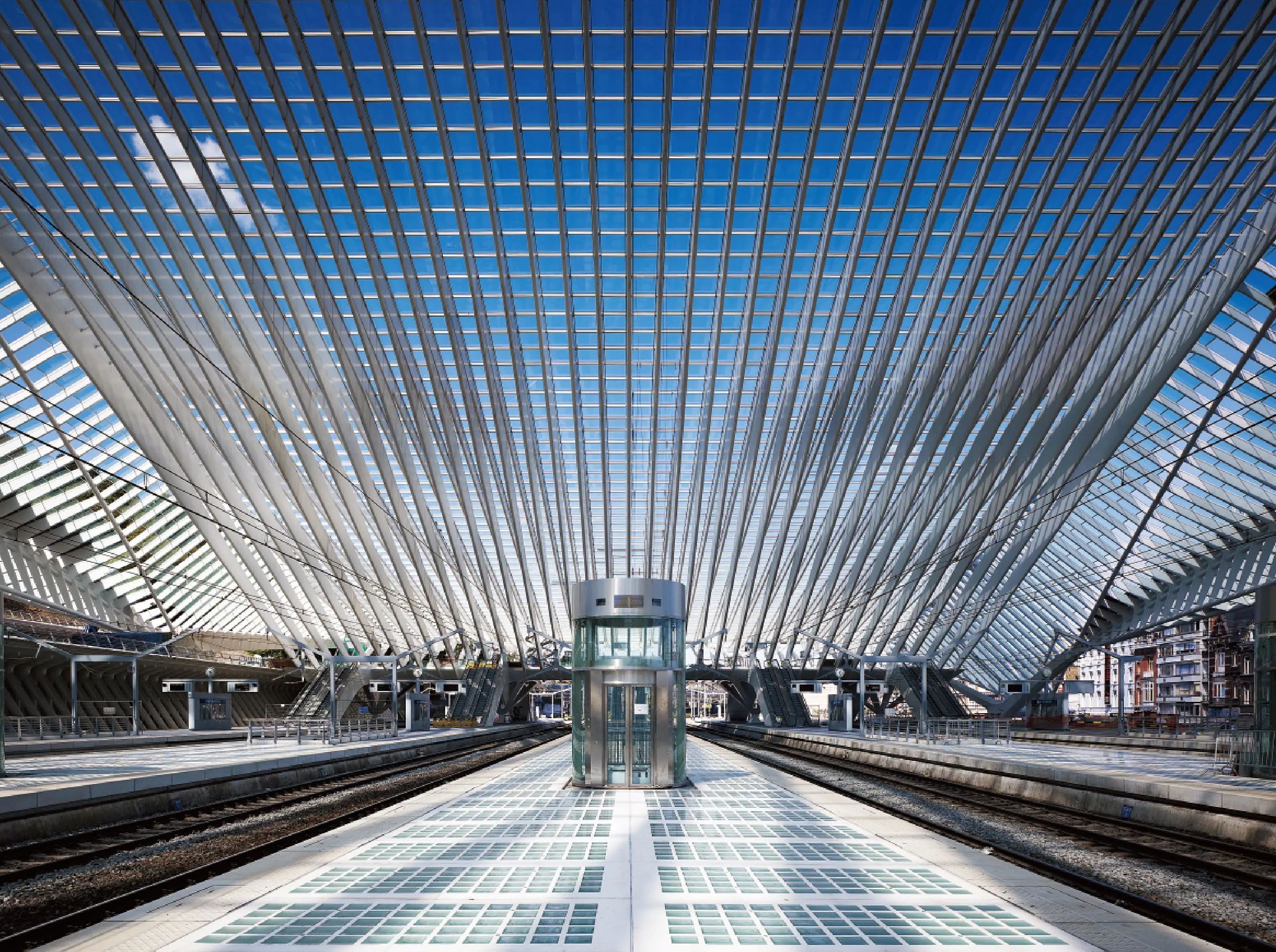
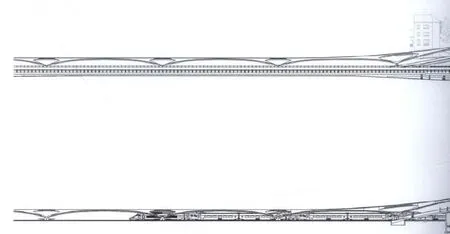
7 内景/Interior view
8 玻璃和钢结构的拱顶/Vault constructed of glass and steel
9 正立面/Front elevation
10 纵剖面/Longitudinal section
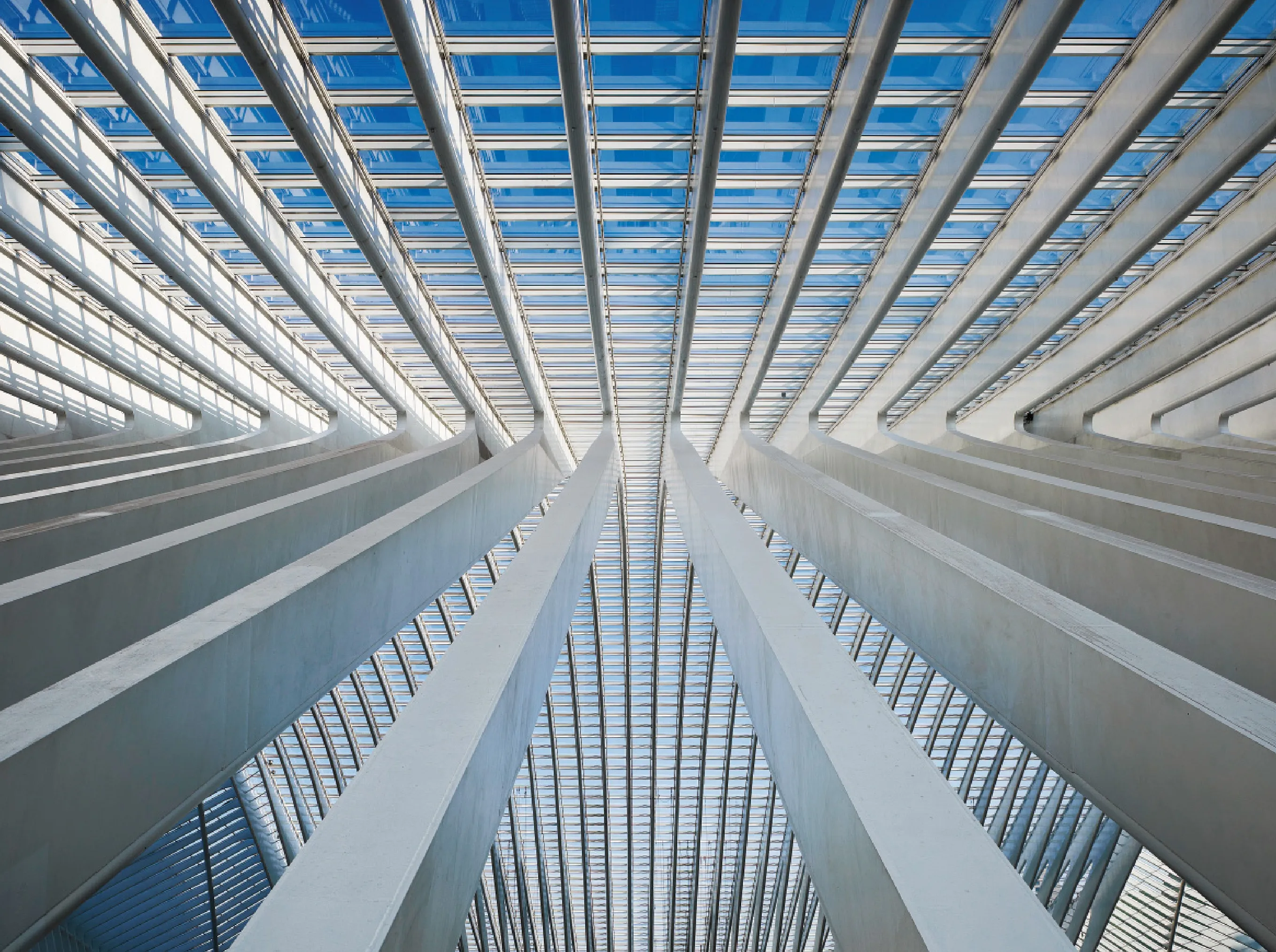
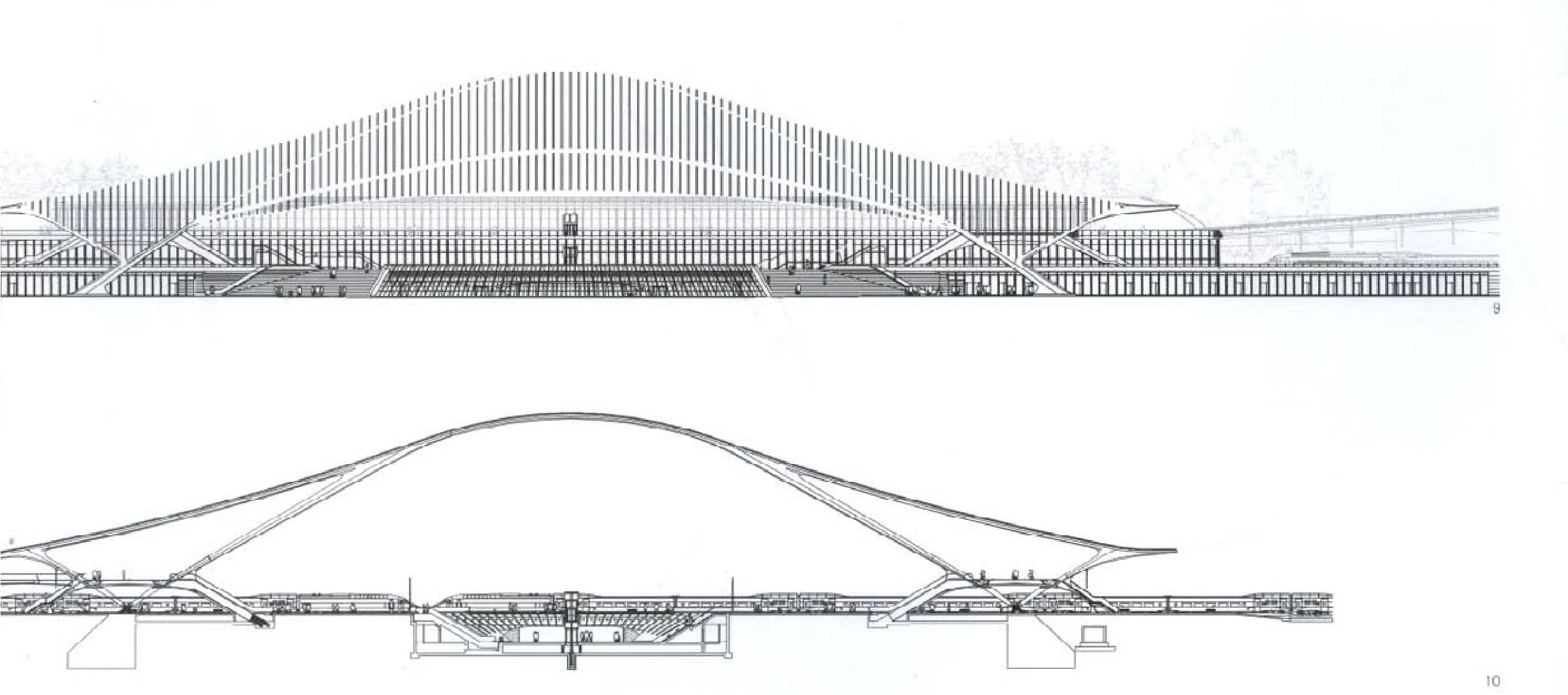
——运动的诗篇

